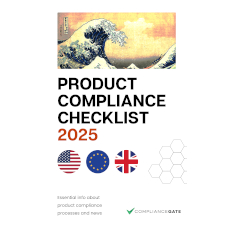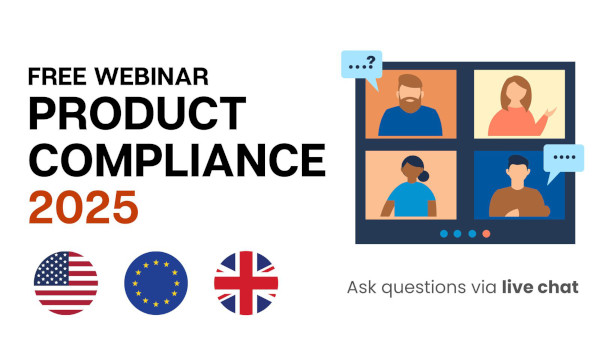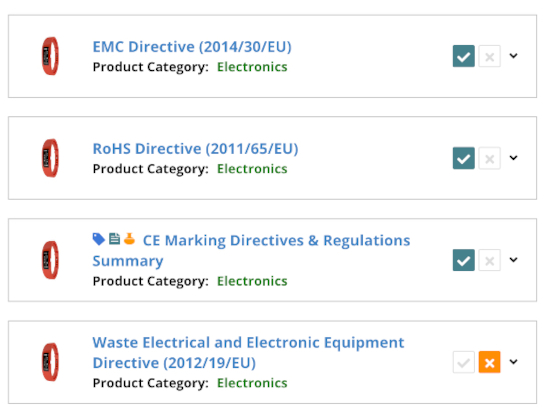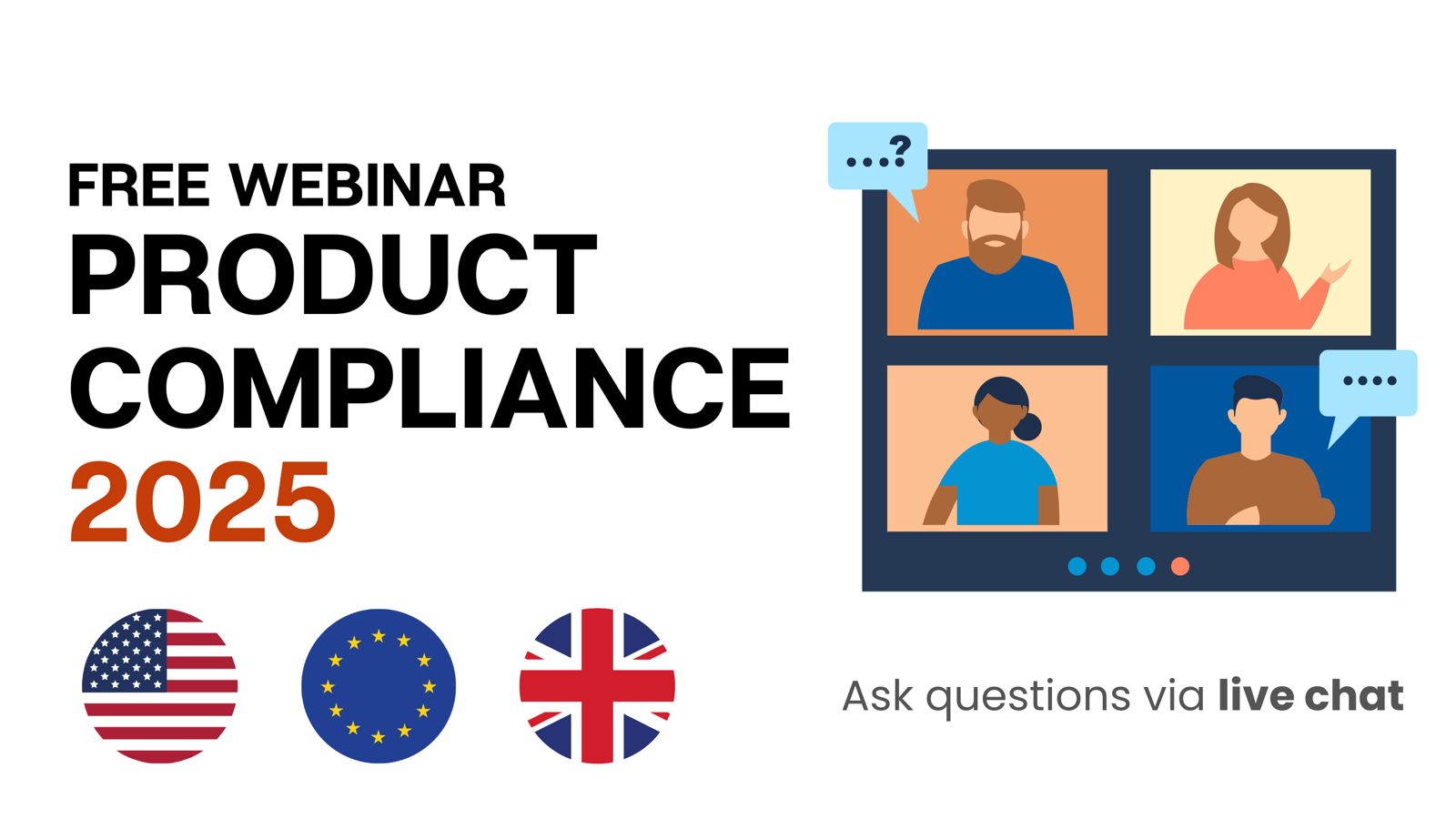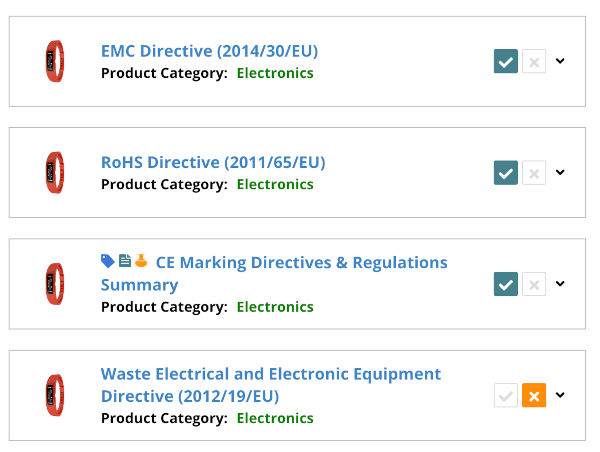Bisphenol A (BPA) is used to enhance the durability of plastics and can be found in food contact materials, toys, and other plastic products. The downside is that Bisphenol A also have a negative health impact, which is why the substance is subject to bans and restrictions in the European Union.
This guide explains how regulations such as the Use of Bisphenol A in FCM Regulation (EU) 2024/3190 and the Toy Safety Directive restrict the use of Bisphenol A.
Content Overview

FREE CONSULTATION CALL (US, EU & UK)
- Request a free 30-minute call with Ivan Malloci to learn how we can help you with:
- Find product requirements
- Certification and labeling
- Lab testing
What is Bisphenol A?
Bisphenol A is an organic chemical mainly used for producing plastics such as polycarbonates and epoxy resins. Bisphenol A is used mainly because it enhances crucial properties such as durability and heat resistance in a wide range of plastic products.
Bisphenol A-based plastics and coatings are common materials used to manufacture various products, such as:
- Food contact materials (FCM)
- Toys
- Eyewear
- Accessories
Research into Bisphenol A suggests that the substance may cause side effects such as harm and disruption to the human hormonal and reproductive systems.
These effects, for instance, could lead to slow development and damage to the functionality of the brain and reproductive organs of infants. Bisphenol A may also negatively impact human fertility and cause skin allergies.
Additionally, Bisphenol A from plastic products may also negatively affect the environment.
Is Bisphenol A banned in the European Union?
Although Bisphenol A is not completely banned, there exist several regulations that either restrict or ban its use in several categories of products. This section provides an overview of the key regulations that restrict Bisphenol A in consumer products.
| Regulation | Bisphenol A restrictions |
| Use of Bisphenol A in FCM Regulation (EU) 2024/3190 | Prohibited in food contact materials (although there are exceptions in some cases if migration to food remains undetectable) |
| REACH Regulation | a. Restricted in thermal paper, as a substance and in mixtures
b. Listed as substance of very high concern (SVHC) |
| Toy Safety Directive | Migration limit is restricted to 0.04 mg/L in:
a. Toys for children up to three years of age b. Toys meant for placement in a child’s mouth |
| Cosmetic Products Regulation | Banned in cosmetic products |
Note that there may exist other regulations that limit the use of Bisphenol A. Additionally, some EU countries have their own national regulations related to the restrictions of Bisphenol A. For example, France bans the use of Bisphenol A in food packaging intended for us by consumers of all ages.

Examples of products and materials that may contain Bisphenol A
Products such as baby feeding bottles, lunch boxes, plastic food packaging, plastic cutlery, plastic toys, and lenses may contain Bisphenol A-based plastics to enhance material durability, shatter resistance, and heat resistance.
Here are a few examples of product categories that may contain Bisphenol A:
- Food packaging
- Plastic toys
- Safety glasses
- Safety helmets
- Reusable plastic FCM
- Optical lenses
- Catheters
As mentioned, Bisphenol A is also a substance used in the electronic manufacturing industry. Bisphenol A-based polycarbonate plastic is sometimes used as the exterior element of products, such as:
- LED lighting
- Computers
- Cell phones
- Hairdryers
- Power sockets
Use of Bisphenol A in FCM Regulation (EU) 2024/3190
This regulation is a specific measure within the EU Food Contact Materials Framework Regulation. It sets requirements regarding the use of Bisphenol A in the following types of food contact materials:
- Adhesives
- Rubbers
- Ion-exchange resins
- Plastics
- Printing inks
- Silicones
- Varnishes and coatings
The regulation sets the following requirements:
a. Substance restrictions on Bisphenol A and other types of bisphenols
b. Declaration of Compliance and supporting document requirements
c. Reporting and authorisation requirements
Bisphenol A restrictions
The regulation restricts the use of Bisphenol A and other types of bisphenols. It prohibits:
a. The use of Bisphenol A and its salts in manufacturing food contact materials and articles
b. Food contact materials and articles manufactured using another bisphenol or derivative containing residual Bisphenol A
However, Bisphenol A may still be used as a monomer or starting substance in liquid epoxy resins, provided that the migration of the substance from the food contact materials into food remains undetectable.
Declaration of Compliance
The regulation requires business operators to create a Declaration of Compliance that contains the following information:
a. The identity, address, and contact details (phone number or email address) of
- The issuer of the Declaration of Compliance
- The importer or the manufacturer
b. The identity of the food contact material or article
c. The date of the declaration
d. A list of any bisphenols used to manufacture the food contact material or article
e. A statement of compliance
Plastic Food Contact Materials: Regulation (EC) 10/2011
This regulation sets requirements regarding the manufacturing of plastic food contact materials and articles.
The Use of Bisphenol A in FCM Regulation (EU) 2024/3190 amends it by setting new restrictions on Bisphenol A. In short, you can use Bisphenol A and other hazardous bisphenols on your plastic food contact materials only if you comply with the requirements set by Regulation (EU) 2024/3190.
REACH Regulation
REACH is an EU regulation that restricts the use of certain chemical substances in consumer products. The Candidate List of Substances of Very High Concern (SVHC) under REACH includes Bisphenol A under Category 1B because it is toxic for reproduction and has endocrine-disrupting properties.
As such, importers and manufacturers must submit to the ECHA a notification via the SCIP database if the concentration of Bisphenol A in their products exceeds 0.1% by weight.
Bisphenol A restrictions on thermal paper
The ECHA has added Bisphenol A to Annex XVII to REACH, restricting the concentration of Bisphenol A in thermal paper to 0.02% by weight.
The main reason for this decision is that cashiers are exposed to Bisphenol A as they must often handle a great number of thermal paper receipts. The unborn children of pregnant workers represent the category that is most at risk for Bisphenol A exposure.
Besides that, according to Entry 30 of Annex XVII, substances listed in Appendix 6 are restricted as substances and mixtures. Note that Bisphenol A is listed in the Appendix. However, medicines, cosmetics and some other products are exempted from the exemption. The reason may be that such substances are restricted by other regulations, such as the Cosmetic Products Regulation.
Bisphenol A restriction intention
Germany proposed to restrict Bisphenol A in products to 0.001% by weight in order to reduce the amount of endocrine-disrupting bisphenols released into the environment. This proposal also concerns other types of bisphenols, that is, Bisphenol B, S, F, and AF.
However, this intention was withdrawn in 2023. The ECHA website claims that the resubmission should be announced through ECHA’s Registry of restriction intentions. However, we could not find any resubmissions.
Toy Safety Directive
The Toy Safety Directive sets migration limit values for some chemicals used in:
- Toys intended for children up to 36 months, or
- Toys intended to be placed in the mouth (e.g. a toy trumpet)
The directive specifically requires the Bisphenol A migration limit to not exceed 0.04 mg/l (migration limit) per the methods and requirements of the following standards:
a. EN 71-10 – Safety of toys – Organic chemical compounds – Sample preparation and extraction
b. EN 71-11 – Safety of toys – Organic chemical compounds – Methods of analysis
Cosmetic Products Regulation
The Cosmetic Products Regulation sets substance restrictions for cosmetics, among other requirements.
Specifically, Annex II lists substances that are prohibited in cosmetic products. This includes Bisphenol A.
Classification, Labelling and Packaging Regulation
The Classification, Labelling and Packaging (CLP) Regulation sets classification, labelling, packaging, and testing requirements for hazardous substances.
This includes Bisphenol A, which can be found in polymers used to manufacture products such as food packaging, toys, and electronics. According to the C&L Inventory, this substance may cause eye damage and respiratory irritation and is:
- Reprotoxic
- Skin sensitising
- Endocrine disrupting
- Very toxic to aquatic life
Labelling requirements
The CLP Regulation requires substances and mixtures containing Bisphenol A to carry harmonised hazard classification and labelling symbols and hazard statements. This is due to the substance’s potential reprotoxic and negative effects on human health and the environment.
Specifically, the packaging label for substances and mixtures containing Bisphenol A must include the signal word “Danger!” and the following pictograms, besides the general labelling information listed in Article 17 of the regulation:
- Corrosive
- Serious health hazard
- Health hazard
- Hazardous to the environment
EN 14372 – Child use and care articles – Cutlery and feeding utensils – Safety requirements and tests
EN 14372 sets test methods and safety requirements for the following products:
- Cutlery meant for use by children aged 3 and under
- Feeding utensils meant for use by children aged 3 and under
- Products whose secondary function allows children to use them as feeding utensils
This standard does not apply to:
- Pre-prepared food containers
- Specialist medical-use cutlery and feeding utensils
- Feeding bottles
- Teats
- Spouts
- Cups
According to Intertek, EN 14372 also sets chemical tests to determine Bisphenol A release.
National Bisphenol A Regulations
Other than the above-mentioned regulations enacted by the EU, there are several national regulations concerning the restriction of Bisphenol A in consumer products. The following are brief descriptions of regulations implemented in some EU countries.
France
France’s Law No. 2012-1442 bans the manufacture, importation, and placing on the market of packaging, containers, or utensils meant to directly contact food intended for infants and young children.
The law also notes that such packaging containing Bisphenol A should include a health warning for:
- Pregnant women
- Breastfeeding women
- Infants
- Young children
Sweden
Sweden’s Regulation SFS 2012:991 forbids the use of Bisphenol A in paints and coatings for food packaging in direct contact with food intended to be consumed by children between the ages of 0 and 3.
Denmark
Denmark’s Statutory Order No. 822 bans the use of Bisphenol A in materials intended to come in contact with food specifically meant for children under the age of 3.
Belgium
Belgium’s Act of 4 September 2012 prohibits the use of Bisphenol A in food containers marketed to children under the age of 3 years.
Austria
Austria’s Federal Law Gazette II No. 327/2011 forbids the use of Bisphenol A in manufacturing pacifiers and teething rings for children.
Bisphenol A Lab Testing
Importers and manufacturers must ensure that the Bisphenol A levels in their products do not exceed specified migration limits and restrictions by having their products lab tested to prove compliance with various regulatory requirements (e.g., REACH, Toy Safety Directive).
When the products pass lab testing, they receive a test report that proves compliance with the relevant requirements.
Test methods
Here are a few examples of methods used to test products for BBisphenol A:
- Liquid chromatography-mass spectrometry (LC-MS)
- High-performance liquid chromatography (HPLC)
- Gas chromatography with mass spectrometry (GC-MS)
Testing companies
Here are some examples of companies that claim they can test products for Bisphenol A:
- Intertek
- SGS
- Eurofins
- Bureau Veritas
Compliance Risks
Plastics used to manufacture food contact materials and other plastics may contain excessive amounts of Bisphenol A. Some manufacturers outside the European Union simply don’t have material data confirming whether their materials contain Bisphenol A or not.
It’s therefore essential to assess the supplier’s existing compliance track record in terms of Bisphenol A test reports issued for previous production runs.
Further, lab testing is also often the only way to verify compliance.


